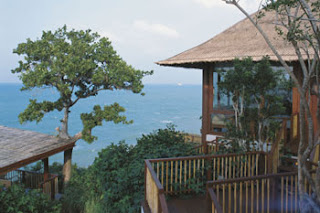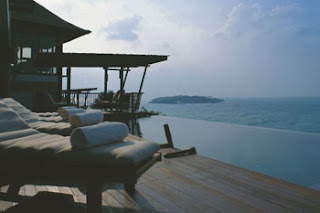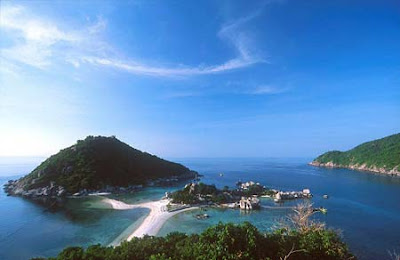
Koh samui, Chaweng Beach, Lamai Beach, Bo Phut Beach , Koh Tao,Koh Phangan and Samrong Bay
Online Asian girls
Tuesday, December 30, 2008
The Tongsai Bay in Samui
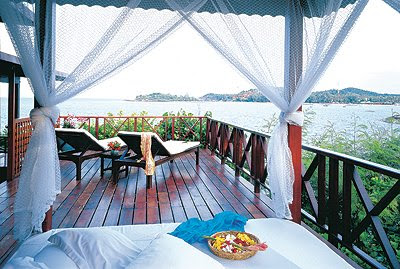


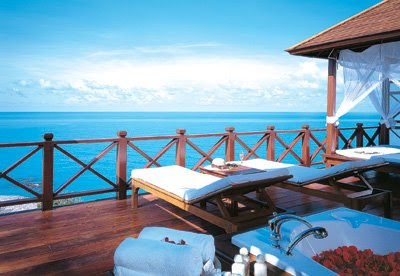
One of the very few resorts on Ko Samui with its own private beach, The Tongsai Bay is splendidly located in Northeastern Samui. Every room is adorned with a spacious terrace and an open-air facilities highlighting on a bath-with-a-view feature, under the concept of ‘Great Outdoor Living’. The resort truly epitomizes a perfect getaway among nature with the personal touch of being owner-managed and staff’s friendliness.
Amari Palm Reef Resort


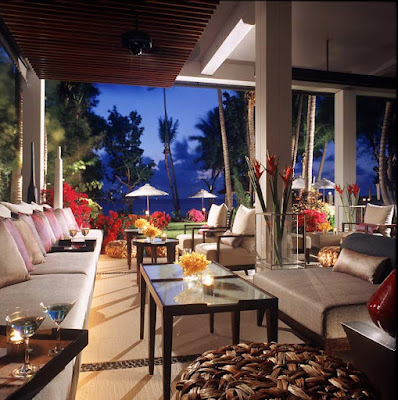

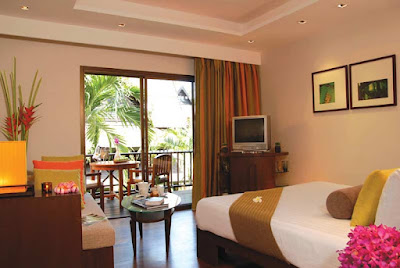
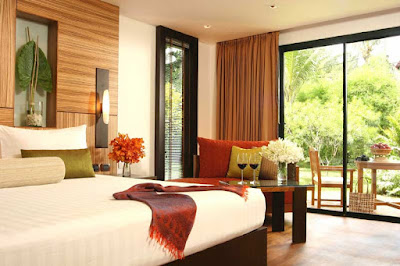
Amari Palm Reef Resort offers unmatched luxury and comfort close to Chaweng, Koh Samui's most popular beach. With elegant traditional Thai style buildings, this boutique Samui hotel offers spacious rooms and unrivalled services. Guests will enjoy a peaceful retreat for a romantic holiday or a family getaway.
Koh Tao

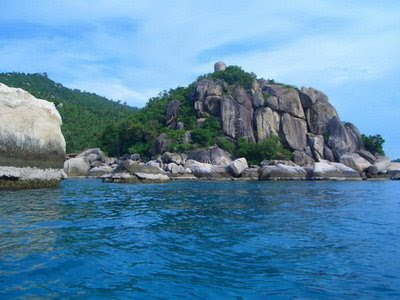




Koh Tao is an island in Thailand located near the eastern shore of the Gulf of Thailand. Koh Tao, little more than 21 km, is located about 70 km east of the coastline between Suratthani and Chumphon, in the Gulf of Thailand. Koh Tao translates as Turtle Island, because in the past the waters teemed with sea turtles. Nowadays they have moved on to new breeding grounds since travelers and tourists enjoy Koh Tao's beaches instead.
Friday, December 12, 2008
Khao Sok National Park



Khao Sok is a fantastic place to go on vacation. Elephant trekking, trekking on foot, canoeing and jeep safaris are all possible activities, which will give you the experience of a lifetime. Khao Sok is perfectly situated on the mainland between Phuket, Krabi, Khao Lak and Koh Samui, the most popular destinations in southern Thailand.
Sunday, April 13, 2008
Saturday, February 2, 2008
How to get to Koh Samui
 Samui - Koh Samui
Samui - Koh SamuiBy Car
Surat Thani can be most conveniently reached by car from Bangkok by taking Highway No. 4 to Chumphon Province via Phetchaburi and Prachuap Khiri Khan Provinces and then taking Highway No. 41 and Highway No. 401 directly to Surat Thani City. By BusAir-conditioned buses depart from Bangkok's Southern Bus Terminal to Surat Thani Province everyday. Call the southern Bus Terminal tel: 0 2434 5557-8 or visit http://www.transport.co.th/
Surat Thani can be most conveniently reached by car from Bangkok by taking Highway No. 4 to Chumphon Province via Phetchaburi and Prachuap Khiri Khan Provinces and then taking Highway No. 41 and Highway No. 401 directly to Surat Thani City. By BusAir-conditioned buses depart from Bangkok's Southern Bus Terminal to Surat Thani Province everyday. Call the southern Bus Terminal tel: 0 2434 5557-8 or visit http://www.transport.co.th/
By Train
Trains leave Bangkok's Hua Lamphong Railway Station 10 times daily from 12 p.m. until 10.50 p.m. The trip takes approximately 12-13 hours. Ask for the train from Bangkok to Phun Phin, the closest station to Surat Thani. For further details, please call 1690, 0 2223 7010, 0 2223 7020 or visit www.railway.co.th.Surat Thani Railway Station is 12 kilometers from town. A bus service between the station and the town is available. By AirThai Airways International has 2 daily flights connecting Bangkok with Surat Thani. The flight time is approximately 70 minutes. For more information, contact their Bangkok office at tel. 1566, 0 2280 0060, 0 2628 2000 or get your on-line e-ticket at http://www.thaiairways.com/
 Samui - By Boat
Samui - By Boat
Seatran (077 275060, 136 Na Meuang Road) operates a bus/boat combination to Ko Samui. The fee is 150 bahts.Phantip Travel (077 272230, 293/6-8 Talat Mai Road) offers tickets to Ko Tao (500 bahts), Ko Pha-Nhan (250 bahts), and Ko Samui (140 bahts). The operator is Raja Ferry (07 314523, 077 371151 or 077 371206) who offers bus/boat combinations to the islands.
Getting around the cityApart from the local orange bus (9 bahts / trip / person),songthaews are another option to get around the city. It costs 10 bahts / trip / person. Samlors will cost approximately 20-30 bahts. The orange bus departs from the Phu Phin train station to the city every 10 minutes from 6.00 a.m. until 8.00 p.m. The same ride by taxi will cost approximately 100 bahts.
Air-conditioned vans connecting the airport and town costs 70-80 bahts / person / trip. Tickets can be purchased at travel agencies or THAI office (077 272610).
FestivalsChak Phra FestivalSurat Thani celebrates the official end of the annual 3-month Buddhist Rains Retreat (Ok Phansa) in mid-October with the Chak Phra Festival (literally 'the procession of hauling the Buddha image’). The tradition stems from the belief that the Buddha ascended to Heaven during Phansa to preach to his mother. The festival marks the Buddha's return to Earth, and is an occasion for religious merit-making and general celebrations. Local people organise dazzling land and waterborne processions of revered Buddha images (to symbolise the Buddha's return to Earth) and boat races on the Tapi River where long boats, manned by up to 50 oarsmen, are ebulliently raced. Religious devotion, spectacle and merriment combine to make Surat Thani's Chak Phra Festival a memorable annual event.
Rambutan FairThe annual August fair celebrates the delicious fruit, first planted in Surat Thani during 1926. Highlights include floats adorned with rambutans and other fruits, exhibitions of local products and ornamental plants, and demonstrations by specially trained monkeys who harvest coconuts.
Trains leave Bangkok's Hua Lamphong Railway Station 10 times daily from 12 p.m. until 10.50 p.m. The trip takes approximately 12-13 hours. Ask for the train from Bangkok to Phun Phin, the closest station to Surat Thani. For further details, please call 1690, 0 2223 7010, 0 2223 7020 or visit www.railway.co.th.Surat Thani Railway Station is 12 kilometers from town. A bus service between the station and the town is available. By AirThai Airways International has 2 daily flights connecting Bangkok with Surat Thani. The flight time is approximately 70 minutes. For more information, contact their Bangkok office at tel. 1566, 0 2280 0060, 0 2628 2000 or get your on-line e-ticket at http://www.thaiairways.com/
 Samui - By Boat
Samui - By BoatSeatran (077 275060, 136 Na Meuang Road) operates a bus/boat combination to Ko Samui. The fee is 150 bahts.Phantip Travel (077 272230, 293/6-8 Talat Mai Road) offers tickets to Ko Tao (500 bahts), Ko Pha-Nhan (250 bahts), and Ko Samui (140 bahts). The operator is Raja Ferry (07 314523, 077 371151 or 077 371206) who offers bus/boat combinations to the islands.
Getting around the cityApart from the local orange bus (9 bahts / trip / person),songthaews are another option to get around the city. It costs 10 bahts / trip / person. Samlors will cost approximately 20-30 bahts. The orange bus departs from the Phu Phin train station to the city every 10 minutes from 6.00 a.m. until 8.00 p.m. The same ride by taxi will cost approximately 100 bahts.
Air-conditioned vans connecting the airport and town costs 70-80 bahts / person / trip. Tickets can be purchased at travel agencies or THAI office (077 272610).
FestivalsChak Phra FestivalSurat Thani celebrates the official end of the annual 3-month Buddhist Rains Retreat (Ok Phansa) in mid-October with the Chak Phra Festival (literally 'the procession of hauling the Buddha image’). The tradition stems from the belief that the Buddha ascended to Heaven during Phansa to preach to his mother. The festival marks the Buddha's return to Earth, and is an occasion for religious merit-making and general celebrations. Local people organise dazzling land and waterborne processions of revered Buddha images (to symbolise the Buddha's return to Earth) and boat races on the Tapi River where long boats, manned by up to 50 oarsmen, are ebulliently raced. Religious devotion, spectacle and merriment combine to make Surat Thani's Chak Phra Festival a memorable annual event.
Rambutan FairThe annual August fair celebrates the delicious fruit, first planted in Surat Thani during 1926. Highlights include floats adorned with rambutans and other fruits, exhibitions of local products and ornamental plants, and demonstrations by specially trained monkeys who harvest coconuts.
Koh Samui Information
 Samui - Koh Tao
Samui - Koh TaoGeneral Information to Koh Samui
The largest province of the South located 685 kilometers from Bangkok is Surat Thani – the province with a name that literally means "City of the Good People”. A former capital of the Srivijaya Empire, the province covers an area of approximately 12,891 square kilometers. Surat Thani Province borders the Gulf of Thailand to the north and east, Chumphon Province to the north, Nakhon Si Thammarat and Krabi Provinces to the south, Phangnga and Ranong Provinces to the west and Nakhon Si Thammarat Province to the east.High plateaus and forested mountains are located to the west of the province, while there are low basins in the center and along the eastern coast. This topography has created 14 river basins including Tapee, Pum Duang, Tha Thong, Tha Krajai, Chaiya, Tha Chang which are the most important basins. All rivers in Surat Thani flow east of the province to the Gulf of Thailand.The numerous islands along the coast makes Surat Thani (often known as Surat in short) a perfect hideaway for vacationers from around the world. The ideal destination for many is the Penang-sized Ko Samui, Thailand's third largest island, and its neighbor – Ko Pha Ngan – a celebrated island that hosts the biggest beach full moon party. To top it all is the dazzling 250-square-kilometer Ang Thong Marine National Park, where a stunning archipelago awaits to greet visitors with their charming palm-fringed beaches, crystal clear water and colorful coral reefs. The best time to enjoy one of these islands to the fullest is from April – November.
The largest province of the South located 685 kilometers from Bangkok is Surat Thani – the province with a name that literally means "City of the Good People”. A former capital of the Srivijaya Empire, the province covers an area of approximately 12,891 square kilometers. Surat Thani Province borders the Gulf of Thailand to the north and east, Chumphon Province to the north, Nakhon Si Thammarat and Krabi Provinces to the south, Phangnga and Ranong Provinces to the west and Nakhon Si Thammarat Province to the east.High plateaus and forested mountains are located to the west of the province, while there are low basins in the center and along the eastern coast. This topography has created 14 river basins including Tapee, Pum Duang, Tha Thong, Tha Krajai, Chaiya, Tha Chang which are the most important basins. All rivers in Surat Thani flow east of the province to the Gulf of Thailand.The numerous islands along the coast makes Surat Thani (often known as Surat in short) a perfect hideaway for vacationers from around the world. The ideal destination for many is the Penang-sized Ko Samui, Thailand's third largest island, and its neighbor – Ko Pha Ngan – a celebrated island that hosts the biggest beach full moon party. To top it all is the dazzling 250-square-kilometer Ang Thong Marine National Park, where a stunning archipelago awaits to greet visitors with their charming palm-fringed beaches, crystal clear water and colorful coral reefs. The best time to enjoy one of these islands to the fullest is from April – November.
 Samui - koh Nang Yuan
Samui - koh Nang YuanHistory of Surat ThaniSurat Thani is a city with a long history. Archeologists believe that it was once a community of prehistoric tribes of indigenous people including the Saemang and original Malays who built their communities on the Tapee River Basin and Ao Ban Don. Later on, the Indians migrated into the area and gradually spread out their culture, as evidenced in the discovery of ruins of ancient communities in Tha Chana and Chaiya Sub-districts.In the 13th century, the city became a part of and, as some historians might claim, a center of the glorious Srivijaya Empire –the kingdom that dominated the whole Malay Peninsula and much of Java. It was during this period that Mahayana Buddhist reached its height of influence.
 The empire’s grandeur can still be admired in many areas of Chaiya District.When the empire hit the bottom, it was divided into 3 main cities namely Chaiya, Tha Thong and Khiri Rat. They were all under the jurisdiction of Nakhon Si Thammarat until King Rama IV decided to move Tha Thong City to Ban Don and required that it report directly to Bangkok’s administration. The name Ban Don was, at the time, changed to “Kanchanadit”. It was with the establishment of the “Monthon”, a former administrative unit, that all three cities were merged into one under the name “Chaiya”. In 1915, King Rama VI changed the name Chaiya to Surat Thani.The seal of Surat Thani says a lot about its history. Featuring the pagoda of Phra Boromathat Chaiya, the seal is proof of the influence of Mahayana Buddhist on Surat Thani. Phra Boromathat Chaiya is the most revered and important historical place in the province. It is believed that the pagoda contains Buddha relics.Today, Surat Thani is an important commercial and shipping hub for rubber and coconut trading.
The empire’s grandeur can still be admired in many areas of Chaiya District.When the empire hit the bottom, it was divided into 3 main cities namely Chaiya, Tha Thong and Khiri Rat. They were all under the jurisdiction of Nakhon Si Thammarat until King Rama IV decided to move Tha Thong City to Ban Don and required that it report directly to Bangkok’s administration. The name Ban Don was, at the time, changed to “Kanchanadit”. It was with the establishment of the “Monthon”, a former administrative unit, that all three cities were merged into one under the name “Chaiya”. In 1915, King Rama VI changed the name Chaiya to Surat Thani.The seal of Surat Thani says a lot about its history. Featuring the pagoda of Phra Boromathat Chaiya, the seal is proof of the influence of Mahayana Buddhist on Surat Thani. Phra Boromathat Chaiya is the most revered and important historical place in the province. It is believed that the pagoda contains Buddha relics.Today, Surat Thani is an important commercial and shipping hub for rubber and coconut trading.
Subscribe to:
Posts (Atom)



